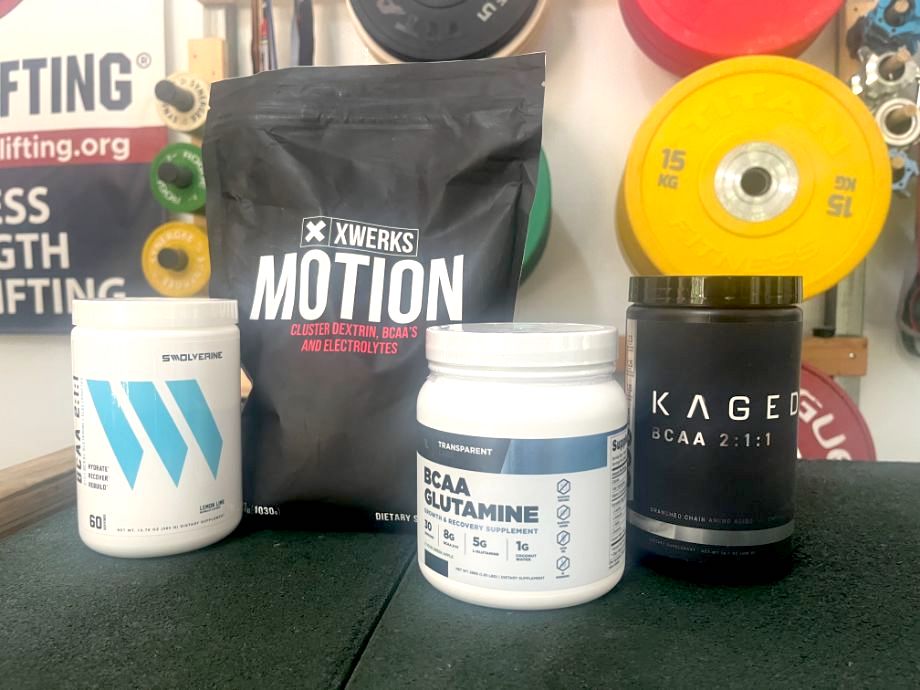We test and review fitness products based on an independent, multi-point methodology. If you use our links to purchase something, we may earn a commission. Read our disclosures.
Look, we’ve compared many things with obvious differences (morning vs evening workouts, anyone?). But now we might be entering one of our most debated topics yet: the battle of EAA vs BCAA, stirring up differences of opinions among researchers, bodybuilders, and fitness enthusiasts alike.
From the naked eye, only a couple of letters differentiate the two. As you focus deeper, both EAAs (essential amino acids) and BCAAs (branched-chain amino acids) are, well, amino acids.
OK, OK… You might argue that both morning and evening workouts are, well, workouts, but tackling both in the morning and evening simultaneously? Now that’s a real challenge!
If you’re already familiar with BCAAs and EAAs, this might make sense. And if you aren’t familiar, no sweat. In this sibling showdown, we’ll catch you up to speed as we dig into the most current data.
Medical disclaimer: This article is intended for educational and informational purposes only. It is not intended as a substitute for medical advice. For health advice, contact a licensed healthcare provider.
What Are Amino Acids and Why Do You Need Them?
Amino acids1 are organic compounds known as the building blocks of protein. They’re essential for producing protein and other vital compounds, including creatine, hormones, and neurotransmitters.
Amino acids provide the body structure while carrying out biological and chemical reactions, including life-sustaining functions like blood clotting and wound healing. Indeed, any attributed benefits of protein—such as building new muscle and reducing muscle soreness—would not be possible without amino acids.
While hundreds of amino acids are found in nature, only about 20 make up all the proteins in the human body. These amino acids are categorized into non-essential and essential, with two subcategories: conditionally essential and branched-chain amino acids.
Non-Essential Amino Acids vs Essential Amino Acids
The body can produce non-essential amino acids on its own, so obtaining them from dietary protein is non-essential. But let’s drive this point home: “non-essential” does not mean they aren’t essential to the body, just that they aren’t always essential to acquire from the diet.
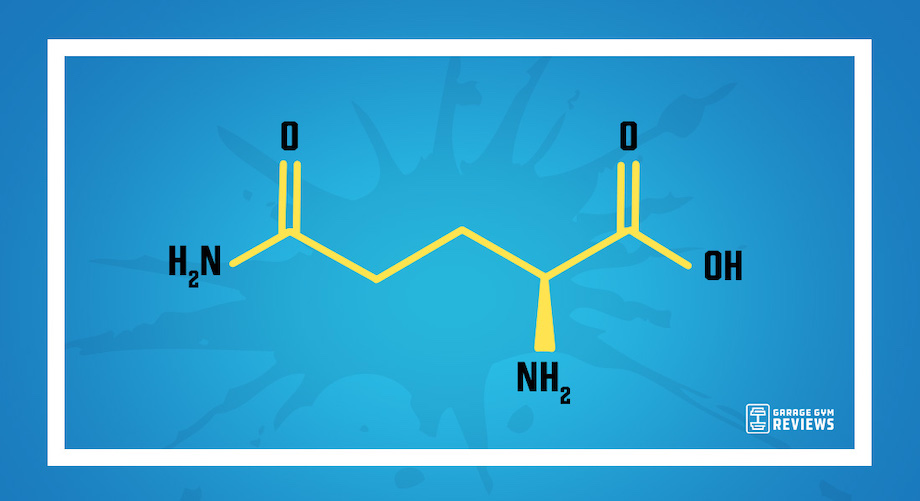
Of the 20, there are 11 non-essential amino acids:
- Alanine
- Arginine*
- Asparagine
- Aspartic acid
- Cysteine*
- Glutamic acid
- Glutamine*
- Glycine*
- Proline*
- Serine*
- Tyrosine*
The asterisk indicates “conditional amino acids,” which may require dietary intake or supplementation in certain conditions—like times of stress and inflammation—similar to essential amino acids.
Unlike non-essential amino acids, the body cannot produce essential amino acids so it’s essential to obtain them from high-protein foods—particularly red meat, poultry, dairy, and eggs—or dietary supplements.
The nine essential amino acids include:
- Histidine
- Isoleucine
- Leucine
- Lysine
- Methionine
- Phenylalanine
- Threonine
- Tryptophan
- Valine
Then we have branched-chain amino acids (BCAAs), EAAs with a unique branch-chain chemical structure. So, because they are EAAs, they must be obtained from dietary protein sources or supplements.
There are three branched-chain amino acids:
- Isoleucine
- Leucine
- Valine
Again, BCAAs are a subset of EAAs. But let’s dive into the nitty-gritty details you came here for!
What Is the Difference Between BCAAs and EAAs?
In a nutshell, all BCAAs are EAAs, but not all EAAs are BCAAs. But let’s crack this one open because the distinctions go much deeper.
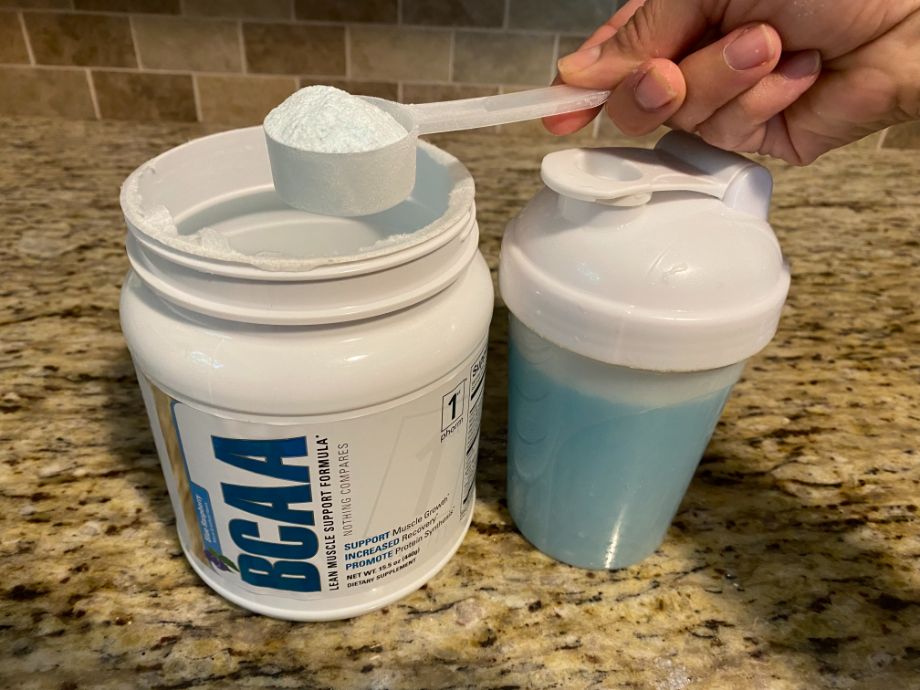
Recall that EAAs consist of nine amino acids: histidine, isoleucine, leucine, lysine, methionine, phenylalanine, threonine, tryptophan, and valine. Notably, all three BCAAs—leucine, isoleucine, and valine—are included within this group of EAAs.
Despite being among the EAAs, BCAAs have metabolic differences with distinct anabolic and catabolic properties.
Anabolic Differences
Gym lingo 101: Anabolic relates to anabolism, the body’s process of creating molecules from smaller units to help build and maintain muscle mass, such as protein synthesis.
Despite all amino acids helping to repair and build muscle, earlier 2007 evidence2 suggests leucine is more effective in signaling muscle protein synthesis. A supporting 2012 study3 implies leucine content is critical for how well your muscles grow and recover after a meal.
Keep this tidbit in your back pocket as we near the intriguing BCAA debate in the next section.
Catabolic Differences
In contrast to anabolism, catabolism refers to the breakdown or degradation of larger molecules into smaller ones, including through oxidation. Before proceeding, let’s clarify: “Catabolic” is often viewed as muscles melting away, and absolutely can insufficient calorie and protein intake cause muscle protein breakdown and loss (research4 fully supports this; it’s not just “bro science”).
However, catabolism generates energy for anabolic processes, including muscle growth and repair. So even if gaining lean muscle mass is your goal, the catabolic process still takes place —but catabolism should not exceed anabolism.
Now that’s out of the way, let’s return to those EAA and BCAA catabolic differences.
An NIH review5 suggests that branched-chain amino acids differ from other essential amino acids because the liver lacks the enzymes required for their catabolism. So whereas the other EAAs are catabolized in the liver, BCAA catabolism6 primarily occurs in skeletal muscle tissue (and the brain).
Additionally, exercise promotes BCAA catabolism7, and physical activity increases the body’s demand for BCAAs. Because BCAAs have been shown to reduce exercise-induced muscle damage and breakdown while promoting muscle-protein synthesis, they’ve established themselves as an isolated pre-workout, intra-workout, and post-workout supplement.
The isolated uniqueness of BCAAs sounds enticing, but these metabolic differences continue to generate differences of opinion among nutrition and fitness experts. As we explore these viewpoints, we’ll rely on current data to guide whether you should take BCAA or EAA (or if you should either at all).
Is It Better to Take BCAA or EAA?
So you’re faced with a choice: a BCAA supplement or an EAA supplement. Which one should you add to your supplement stack?
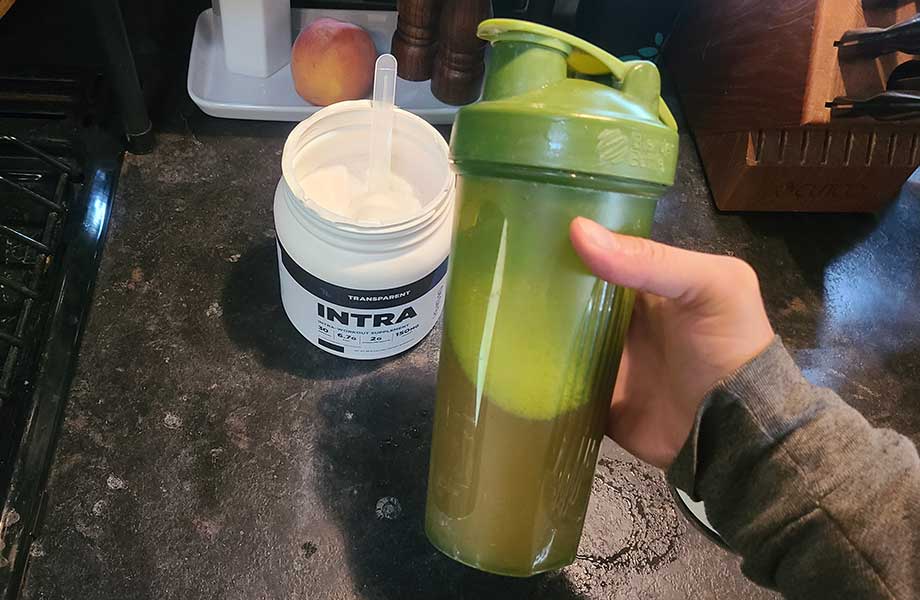
Before addressing a better option, let’s quickly recap what sparked the BCAA debate. Ultimately, it revolves around one the most continuously debated benefits of BCAAs (*cough* supporting muscle growth *cough*), but a verdict has been reached…
In 2017, the International Society of Sports Nutrition8 stated that all EAAs must be abundantly available to increase anabolic signaling and muscle protein synthesis. They took an assertive stance and concluded, “The claim that consumption of dietary BCAAs stimulates muscle protein synthesis or produces an anabolic response in human subjects is unwarranted.”
A 2021 review published in the International Journal of Sport Nutrition and Exercise Metabolism9 explains that while leucine does stimulate anabolic pathways, there is no further benefit to the muscle protein response beyond a certain threshold of leucine and total protein intake. Furthermore, BCAA supplementation appears to have little or no efficacy for enhancing gains in muscle mass when energy (calories) and protein intake are sufficient.
Additionally, a 2022 systematic review10 concludes branched-chain amino acid supplement does not seem to improve athletic performance and muscle and strength gains.
The current verdict: If you are to take one of these supplements, opting for an EAA supplement that includes BCAAs is likely more worthwhile.
Should I Take Both BCAA and EAA?
Many sources claim that you can supplement with EAA and BCAA supplements together and even suggest experts recommend doing so. But based on the research we just explored, and to attack if you should take both BCAA and EAA from all angles, let’s reiterate and clarify two key points:
- Essential: Consuming BCAAs and EAAs
- Non-Essential: Taking Both BCAA and EAA Supplements Together
I’ll clarify and explain.
Essential: Consuming Both BCAAs and EAAs
Unlike non-essential amino acids, the body cannot make essential and branched-chain amino acids. For this reason, you must obtain BCAAs and EAAs from high-protein food sources (most ideal) or protein supplements (less ideal).
One could argue that free BCAAs and EAAs are technically protein supplements, and they’re not wrong! Still, a protein concentrate or isolate may be best since most types of protein powders contain all amino acids—non-essential, essential, and branched-chain amino acids. Repeat after me: The body requires ALL amino acids to function optimally (in the absence of amino acid disorders11).
The good news? If you prioritize high-quality animal and plant proteins, you’re likely getting all those precious building blocks your body needs to build, grow, and thrive.
While plant proteins can fall short of essential amino acids, there’s still good news for plant-forward consumers! The GGR team rounded up some of the best vegan protein powders with complete protein options. But if you fancy an EAA supplement, ensure it’s vegan-friendly.
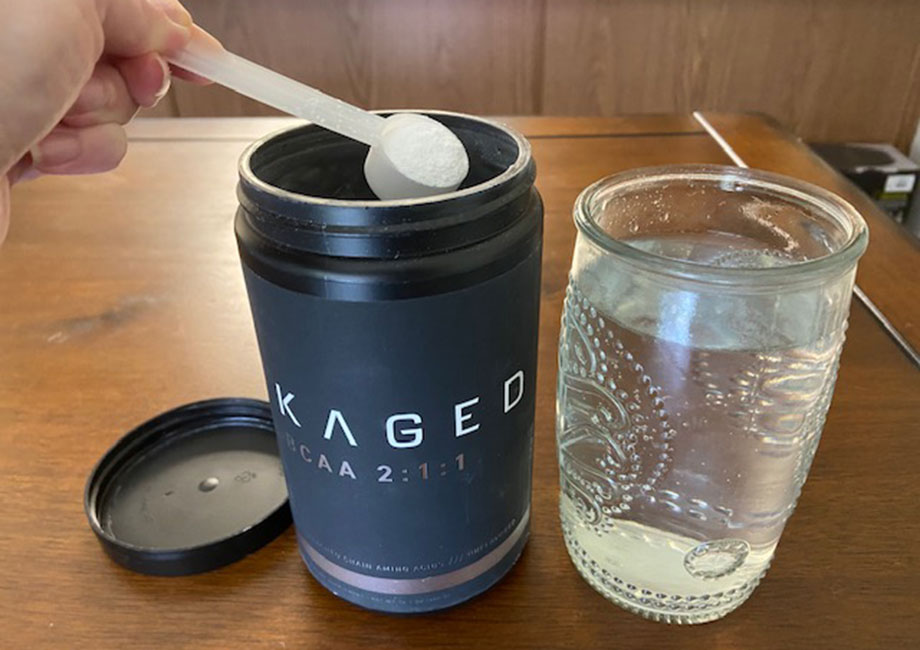
Non-Essential: Taking Both BCAA and EAA Supplements Together
First and foremost, if a source encourages you to take both BCAA and EAA supplements together, check if they sell those products. (#Marketing) Supplements themselves also come with risks and amino acid supplements have potential side effects,12 especially if taken in excess and long-term.
Marketing ploys and side effects aside, recall that the latest data suggests there’s really no added benefit to take either if you’re already hitting your protein targets. Provided sufficient leucine is present in each condition, we can lean on the current research-backed hierarchy for the most robust anabolic response:9
Whole intact proteins > EAA > BCAA > leucine alone
Again, if you were to take one, an EAA supplement is likely the better investment. However, you’re bound to hit the jackpot with whole intact protein sources.
Pro tip: If you’re unsure about your protein requirements, we strongly encourage consulting a nutrition expert for guidance. But to get started, Amanda Capritto, a GGR senior staff writer and NASM-Certified Sports Nutrition Coach, fully addresses the question “How much protein do I need?”
EAA vs BCAA: Final Thoughts
If you’re getting enough protein and calories to support your training and physique goals, the most current evidence doesn’t fully support taking BCAA and EAA supplements. However, since all amino acids are required for muscle protein synthesis and other critical body functions, an EAA supplement with BCAAs naturally in the mix might be your best option.
Here’s the ultimate takeaway (and a proposition to leave you with): Nutrition science is changing by the second, and a new research study could flip this BCAA vs EAA debate upside down right after it’s published. While using supplements is ultimately up to the user’s discretion, prioritizing a high-quality, nutrient-dense diet stands the test of time.
And to leave you, I propose this: Rather than thinking of it as EAA vs BCAA, consider EAA and BCAA—ideally from whole foods. Besides, the body requires ALL amino acids to build, repair, and function optimally. (Refer back to the “Should I take both BCAA and EAA?” section for the caveat!)
EAA vs BCAA: Q&A
Is EAA better than BCAA for muscle recovery?
Muscle recovery, especially attenuating exercise-induced muscle damage, is one of the most evidence-based benefits of BCAAs. However, essential and non-essential amino acids are among the best muscle recovery supplements due to their critical roles in growing and recovering muscles.
What are the disadvantages of EAAs?
While excess and long-term use of EAAs can cause side effects12, the most significant disadvantage may be investing in an EAA supplement with little return if you already obtain enough through dietary protein sources (and maybe a protein shake).
Do you need EAA to build muscle?
For optimal muscle building, the body requires adequate availability of all 20 amino acids—including non-essential, essential, and branched-chain amino acids.8
Is it OK to take EAA everyday?
If you’re already meeting your protein needs with high-protein foods, you likely won’t need an EAA supplement. While it might not hurt, it’s still important to be aware of potential amino acid side effects12 (and be mindful that your money might not be put to the best use).
These statements have not been evaluated by the Food and Drug Administration. This product is not intended to diagnose, treat, cure, or prevent any diseases.
References
- National Research Council (US) Subcommittee on the Tenth Edition of the Recommended Dietary Allowances. Recommended Dietary Allowances: 10th Edition. Washington (DC): National Academies Press (US); 1989. 6, Protein and Amino Acids. Available from: https://www.ncbi.nlm.nih.gov/books/NBK234922/
- Fujita S, Dreyer HC, Drummond MJ, et al. Nutrient signalling in the regulation of human muscle protein synthesis. J Physiol. 2007 Jul 15;582(Pt 2):813-23. doi: 10.1113/jphysiol.2007.134593. Epub 2007 May 3. PMID: 17478528; PMCID: PMC2075348.
- Norton LE, Wilson GJ, Layman DK, et al. Leucine content of dietary proteins is a determinant of postprandial skeletal muscle protein synthesis in adult rats. Nutr Metab (Lond). 2012 Jul 20;9(1):67. doi: 10.1186/1743-7075-9-67. PMID: 22818257; PMCID: PMC3488566.
- Carbone JW, Pasiakos SM. Dietary Protein and Muscle Mass: Translating Science to Application and Health Benefit. Nutrients. 2019;11(5):1136. Published 2019 May 22. doi:10.3390/nu11051136
- Institute of Medicine (US) Committee on Nutrition, Trauma, and the Brain; Erdman J, Oria M, Pillsbury L, editors. Nutrition and Traumatic Brain Injury: Improving Acute and Subacute Health Outcomes in Military Personnel. Washington (DC): National Academies Press (US); 2011. 8, Branched-Chain Amino Acids. Available from: https://www.ncbi.nlm.nih.gov/books/NBK209312/
- Bifari F, Nisoli E. Branched-chain amino acids differently modulate catabolic and anabolic states in mammals: a pharmacological point of view. Br J Pharmacol. 2017;174(11):1366-1377. doi:10.1111/bph.13624
- Shimomura Y, Murakami T, Nakai N, et al. Exercise promotes BCAA catabolism: effects of BCAA supplementation on skeletal muscle during exercise. J Nutr. 2004 Jun;134(6 Suppl):1583S-1587S. doi: 10.1093/jn/134.6.1583S. PMID: 15173434.
- Wolfe RR. Branched-chain amino acids and muscle protein synthesis in humans: myth or reality?. J Int Soc Sports Nutr. 2017;14:30. Published 2017 Aug 22. doi:10.1186/s12970-017-0184-9
- Plotkin DL, Delcastillo K, Van Every DW, et al. Isolated Leucine and Branched-Chain Amino Acid Supplementation for Enhancing Muscular Strength and Hypertrophy: A Narrative Review. Int J Sport Nutr Exerc Metab. 2021 May 1;31(3):292-301. doi: 10.1123/ijsnem.2020-0356. Epub 2021 Mar 18. PMID: 33741748.
- Marcon M, Zanella PB. The effect of branched-chain amino acids supplementation in physical exercise: A systematic review of human randomized controlled trials. Sci Sports. Published online January 2022. doi:https://doi.org/10.1016/j.scispo.2021.05.006
- Aliu E, Kanungo S, Arnold GL. Amino acid disorders. Ann Transl Med. 2018;6(24):471. doi:10.21037/atm.2018.12.12
- Holeček M. Side effects of amino acid supplements. Physiol Res. 2022;71(1):29-45. doi:10.33549/physiolres.934790
Further reading

Garage Gym Reviews collaborated with Jacob Penner, USA Weightlifting Level 1 Coach, NSCA-Certified personal trainer, and CrossFit Level 1 Trainer to give expert advice on this topic. Read more

Ready to sweat? We’ve got the best vertical climber workouts to get your heart rate up and improve your fitness. Read more

After testing dozens of sneakers, and researching many others, we’ve created our list of the 10 best cross-training shoes for 2021. Read more

Looking to shake up your cardio routine? Try an elliptical HIIT workout for cardiovascular benefits and more. Read more

